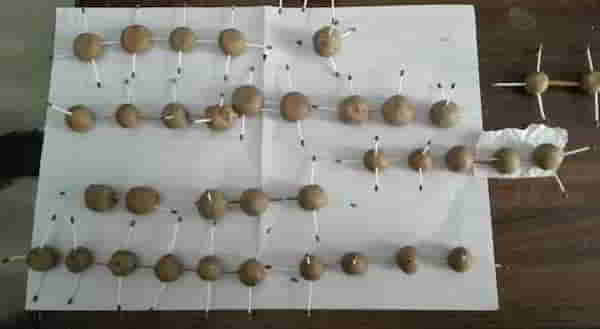When working with teachers to help them improve their teaching, I am always hoping that they would, at some point, use their own imagination and creativity to make science teaching and learning considerably more hands-on using locally available resources.
Of course, “teaching” that has been a real challenge for me because, in my 15+ years of teaching Chemistry/Science internationally, I was spoiled rotten by the resources and facilities available to me! 😀
Like for instance, the year I had this exchange with an administrator and others over “explosive” chemicals at TISA in Baku, Azerbaijan, the science department got over 12K Euros worth of materials, mostly chemicals! At Qatar Academy in Doha, Qatar, I was not left wanting for anything that I desired for my chemistry and science lessons!
But science education at government (public) schools in Nepal, of course, is something else entirely!
Regardless, volunteering at Jana Uddhar School, I had hoped to help and inspire my new-found colleagues to do more! Managed by my mate Pete Patisson, the school is the first Collaborative School in the country! On his request, I worked with two teachers one-on-one for some time.
The training program involved lesson observations and feedback, team-teaching, model lesson demonstrations, and lesson planning together. (Click here and here and here for blog posts about some of my experiences.)
One of the teachers, Namrata Miss, was keen to learn and was receptive to my ideas and suggestions for a different approach to teaching from how she had learned to teach — and had been taught — the subject.
When I suggested role-playing to demonstrate chemical reactions between elements and also to study and explain the pattern in chemical behavior of elements in the periodic table, for instance, she did them! Sitting down to plan lessons on fuels, energy and light, I had suggested the kitchen and given her ample details of the demonstrations and experiments she could conduct. The next time I was back at the school, I discovered she had indeed carried it out!
Every time I discovered how she had followed through with our lesson plans etc. warmed my heart, of course! My time and efforts were not going to waste on at least Namrata!
But, what brought the greatest sense of satisfaction came in the form of a Whatsapp message from her — on November 20, 2016 — containing the following image.
Can you tell what they are? They are hydrocarbon models!
(Hydrocarbons are a class of compounds made up of carbon and hydrogen. Organic Chemistry is the topic under which the chemistry of hydrocarbons is studied.)
She accompanied the image with the following text:
Hello sir!
Namaskar!
Students made hydrocarbons using clay and matches.
I thought you would like to see it.
Of course, I loved seeing it! I loved also that she was so clearly proud of using her own imagination and creativity to find a solution to the problem of lack of molecular models…as she should be!
I told her that, that was “fantastic,” “creative” and “great” and encouraged her to “keep it up!”
And, if I may, I am proud of her too! I had nothing to do with this very novel way of making molecular models! She came up with it on her own!
That message that day made my day!
And you know something? I’m going to steal her idea and suggest this to other teachers I train.
As a matter of fact, if clay is not available, I’ll tell them to replace it with dough! The students themselves can make the dough. When the dough dries, the models could be put on display!
Match sticks and dough could also be used to teach shapes of molecules. Creative use of dough, small grains, like rice or wheat or corn, could generate models of atoms, which in turn could also be useful in teaching pattern in their size etc.! There are so many possibilities!
What do you think?


